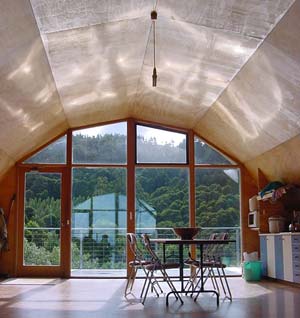Optimal tuning of classical guitar
part 2: Guitar string load balancing
by Dr Tom Chalko
The increase in sound projection of modern classical guitars can be achieved by thinning guitar tops and their bracing, resulting in more flexible (and also more fragile) soundboard membranes.
Fig 1. below illustrates the key problem. Forces of strings in tension and force that holds the bridge attached to the guitar soundboard top do not act in the same plane. These forces produce the static bending moment F*h that continuously acts to bend the guitar soundboard.
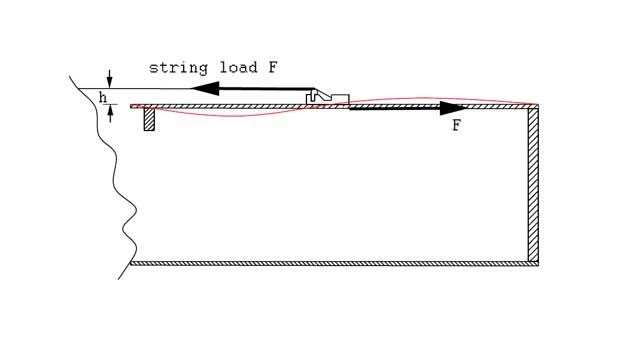
Since timber and other composite materials used for guitar tops are not perfect springs, bending deflections caused by this persistent bending moment increase in time and become permanent.
Symptoms of this bending include
- guitar sound is not as good as when guitar was "new"
- guitar becomes out of tune in high positions, because bridge tilts, which reduces string lengths
- Sound response of guitar becomes compromised, because soundboard that is subject to bending load no longer acts as a "optimal sound-projecting membrane".
- guitar and its tuning become increasingly sensitive to temperature/humidity changes, because timber under bending load is more sensitive to these changes than timber under pure tension or compression.
Solution
My solution involves installing a carbon-fibre tube 4mm in diameter through guitar soundhole as shown in Fig 2. Weight of this tube is about 2 grams.
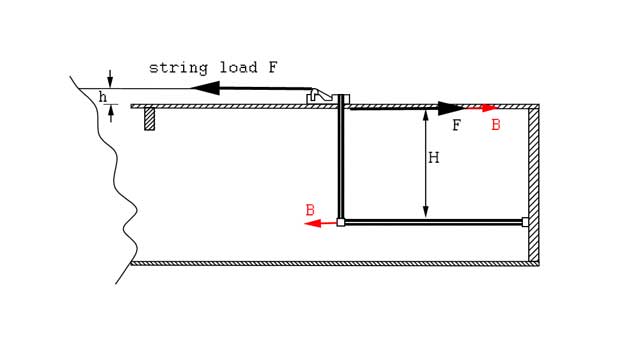
The vertical tube is installed in a 4mm hole through the bridge, missing bracing beams and string-tying holes.
In my preliminary attempt I installed another tube, parallel to strings, under compression, to produce force B on the tip of the vertical tube approximately equal to B=F*h/H (see Fig 2 for notation). In my final design I used a nylon string in tension along the arrow of the force B, connecting the bottom tip of the vertical tube to the bottom base of the guitar neck. This "additional internal string" provides minimal possible constraints to vibrations of the top.
After I installed the system in my Juan Hernandez 2012 Luthier model guitar I held the guitar without strings for about 4 weeks to let the soundboard "unbend" itself. After I installed strings - the soundboard remained unbent.
The acoustic response of the instrument has become much better. I could not stop playing it for several days, few hours each day. "Bright" sound typical to "lattice-braced" guitars has become rich and controllable, like in best guitars.
Then I implemented the "bend balancing" system to my second guitar Yulong Guo Chamber Concert 2015 double top (cedar and nomex laminate top). This guitar has almost no bracing (see Photo 2) and after 12 months of playing - the increased top deformation has caused the bridge to "raise" and alter the guitar "action".
Effect of "bend balancing" on my double-top guitar has also been impressive.
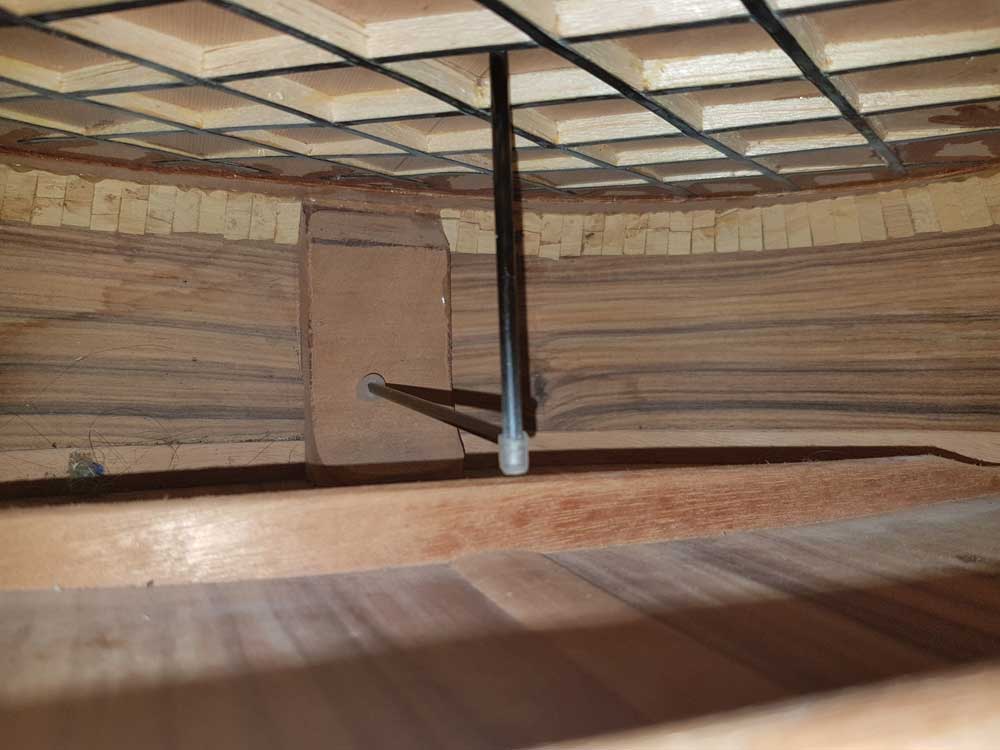
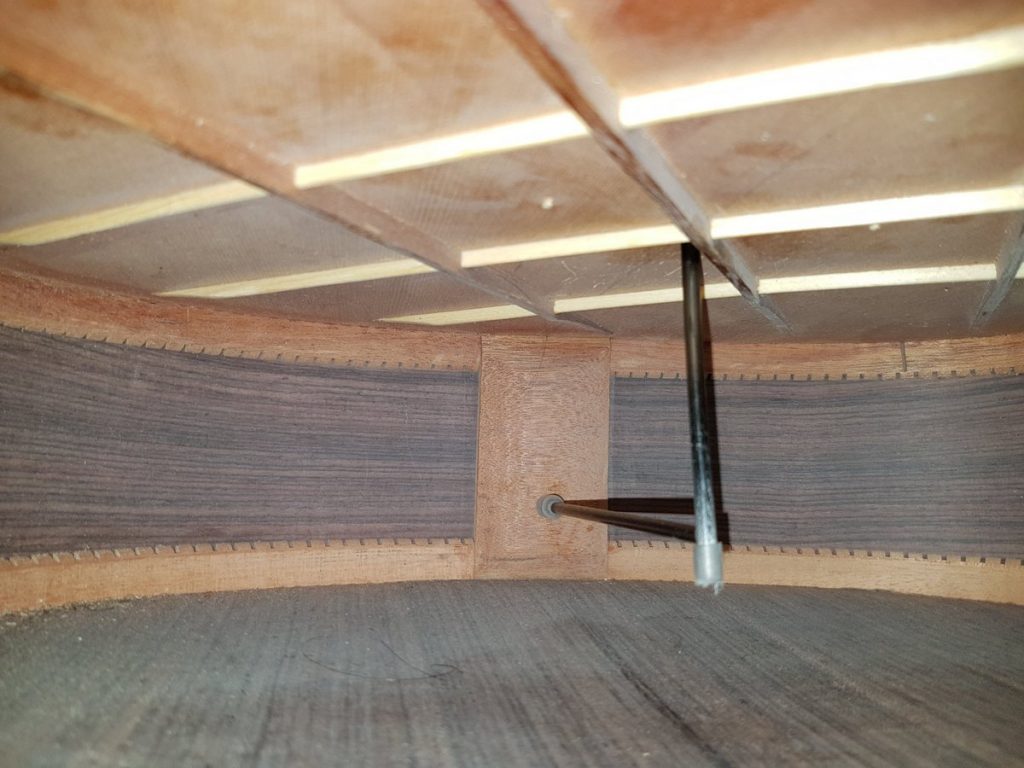
On the basis of my testing, the "bend balancing" method described in this article has potential to become a new method of restoring sound to older guitars and preventing deterioration of both new and old guitars.
It is quite likely that the "bend balancing" technique can open new frontiers in guitar design and construction with luthiers pushing for even thinner tops and more adventurous top bracings.
Pre-loaded carbon tube allows optimization of guitar bracing structure from the point of view of the final result: the sound performance of the instrument.
Carbon-fibre tube is removable. You can also choose to balance "part" of the bending moment (50% or 80% for example).
Instead of patenting I decided to share my method freely, but I would appreciate acknowledgment of its implementation. Please contact me for more details.
String load balancing allows "Structural tuning of guitar" which can optimize acoustic performance and reveal full potential of the instrument.


